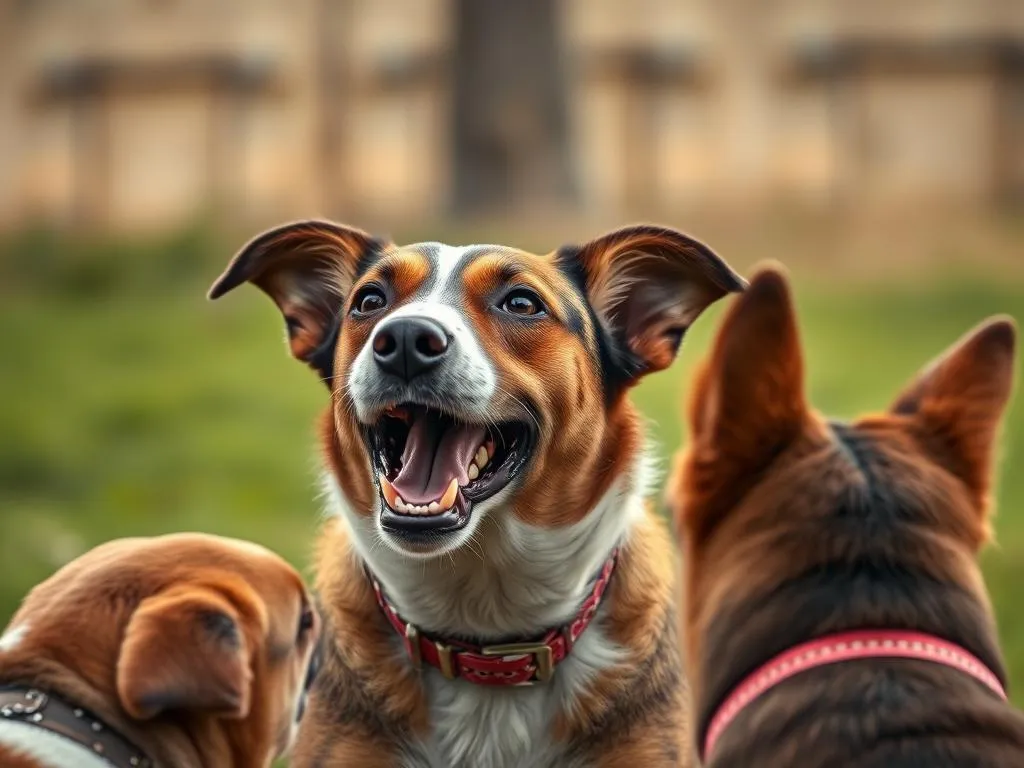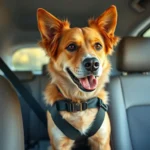
Introduction
Dog bullying is a term that has gained traction among dog owners and trainers alike. It refers to a range of aggressive behaviors exhibited by one dog toward another, often characterized by intimidation, dominance, and harassment. Understanding this behavior is essential not only for dog owners but also for the broader community, as it can significantly impact the welfare of our canine companions.
Recognizing the signs of dog bullying and its underlying causes can help mitigate its effects. In this article, we will explore the definition of dog bullying, its causes, the signs to look for, how to address it, and strategies for prevention. By the end, you’ll be equipped with the knowledge to create a safer and more harmonious environment for your dog and its peers.
Understanding Dog Bullying
What is Dog Bullying?
Dog bullying is often confused with normal play behavior, but there are crucial distinctions between the two. While play typically involves mutual engagement, shared excitement, and physical interaction without malice, bullying manifests through aggressive behaviors aimed at instilling fear or asserting dominance.
Types of behaviors that define dog bullying may include:
– Growling or snarling when another dog approaches
– Excessive barking that seems directed at a specific dog
– Chasing another dog in a way that appears threatening
– Blocking a dog’s path or preventing it from accessing resources, like toys or food
In contrast, playful behavior is characterized by wagging tails, relaxed body language, and playful barks or yips. Understanding these differences is crucial for dog owners to identify and address bullying before it escalates.
Causes of Dog Bullying
There are several factors that can contribute to dog bullying:
Genetic Factors: Certain breeds are more predisposed to aggressive behavior. Breeds like Bull Terriers and Rottweilers may exhibit bullying tendencies if not properly trained and socialized.
Socialization Issues: Early socialization is crucial in preventing bullying behavior. Dogs that have not been exposed to a variety of other dogs, people, and situations may develop fearful or aggressive tendencies, leading to bullying.
Owner Influence: Sometimes, the behavior of the owner can inadvertently encourage bullying. For example, if an owner rewards aggressive behavior with attention or treats, the dog may learn to associate bullying with positive reinforcement.
Signs of Dog Bullying
Recognizing Bullying Behavior
Identifying signs of dog bullying is essential for timely intervention. Specific behaviors to look for include:
- Growling or barking excessively at other dogs
- Snapping or lunging when another dog gets too close
- Stiff body posture or raised hackles
- Quick, aggressive movements toward another dog
When a dog is engaged in bullying, it may frequently exhibit these behaviors, particularly when interacting with specific dogs.
Impact on Other Dogs
The effects of bullying extend beyond the aggressor. Dogs that are bullied may show signs of distress, such as:
- Cowering or tucking their tails
- Avoiding certain areas or other dogs
- Exhibiting submissive behaviors, such as rolling over or urinating in submission
Long-term effects on the victim dog’s behavior and mental health can include anxiety, fearfulness, and even aggression toward other dogs. These consequences highlight the importance of addressing bullying behaviors promptly.
Addressing Dog Bullying
Immediate Steps to Take
When witnessing a dog bullying incident, it is vital to intervene quickly but safely. Here are a few immediate steps you can take:
- Distraction: Call your dog away or use a toy to redirect their attention.
- Separation: If necessary, physically separate the dogs to prevent further altercations.
- Stay Calm: Your demeanor can influence the situation; remain calm and assertive to help de-escalate the tension.
Ensuring the safety of both dogs is paramount, as escalating aggression can lead to injuries.
Training Techniques
Training is a critical aspect of mitigating bullying behavior. Positive reinforcement strategies can be particularly effective. Here are a few techniques:
- Reward Good Behavior: Use treats and praise to reinforce positive interactions between your dog and others.
- Obedience Training: Teaching basic commands like “sit,” “stay,” and “leave it” can help manage your dog’s behavior in social situations.
- Controlled Socialization: Arrange controlled playdates with well-behaved dogs to help your dog learn appropriate social cues.
These techniques can promote good behavior and reduce the likelihood of bullying.
Professional Help
If bullying behavior persists despite your efforts, it may be time to seek professional help. Consulting a veterinarian or a certified dog trainer can provide insights tailored to your specific situation. Behavioral therapy can also be beneficial, as it addresses the root causes of aggression and helps modify behavior over time.
Preventing Dog Bullying
Socialization Strategies
One of the most effective ways to prevent dog bullying is through proper socialization. Here are some strategies:
- Early Exposure: Introduce your dog to various breeds, sizes, and temperaments during their formative months.
- Structured Playgroups: Join training classes or dog parks where dogs are supervised and can interact safely.
The goal is to create a well-rounded dog that feels comfortable in various social situations.
Creating a Positive Environment
Fostering a safe and friendly play environment is crucial. Here’s how to do it:
- Monitor Play: Always supervise play sessions to intervene if necessary.
- Safe Spaces: Ensure that your dog has a safe retreat where it can escape from overwhelming situations.
- Positive Reinforcement: Encourage friendly interactions by rewarding your dog for calm behavior around other dogs.
Creating a positive atmosphere can greatly reduce the likelihood of bullying incidents.
Owner Education
An educated dog owner is better equipped to prevent dog bullying. Understanding canine body language, social dynamics, and proper training techniques can make a significant difference.
Consider the following resources for increasing your knowledge:
– Books on canine behavior and training
– Online courses or webinars focused on dog behavior
– Workshops offered by local animal shelters or trainers
Educating yourself about dog behavior can help you recognize potential issues before they escalate.
Real-Life Examples
Case Studies of Dog Bullying
Many dog owners have faced the issue of bullying. For instance, a golden retriever named Max was known for bullying smaller dogs at the local dog park. After consulting a trainer, his owner learned to redirect his behavior and encourage more positive interactions. Over time, Max became a more sociable and friendly dog.
Another case involved a Dachshund who was bullied by larger dogs. The owner worked on socialization and introduced her dog to friends’ dogs gradually. With time, the Dachshund became more confident and less fearful, showing that patience and training can lead to positive outcomes.
Testimonials from Dog Owners
Here are some insights from dog owners who have dealt with bullying:
- “I never realized my dog was bullying others until I saw how they reacted. It took a lot of training, but now he’s much better around other dogs.”
- “My dog used to avoid the park because he was bullied. After working with a trainer, he’s more confident and plays well with others now.”
These testimonials highlight the importance of addressing bullying behavior and the positive changes that can occur with the right approach.
Conclusion
Understanding dog bullying is crucial for fostering a healthy environment for our furry friends. By recognizing the signs, understanding its causes, and implementing effective training and socialization strategies, we can combat this behavior effectively.
It is essential for dog owners to take proactive steps in addressing and preventing bullying, not only for their dogs’ well-being but also for the safety of other dogs in the community. With dedication and knowledge, we can create a more harmonious environment for all dogs to thrive.









